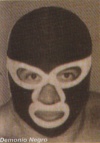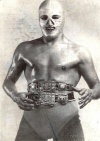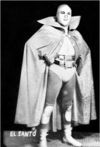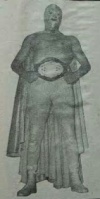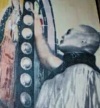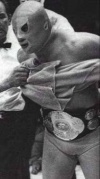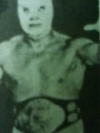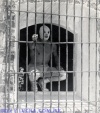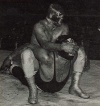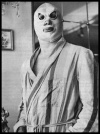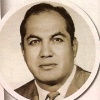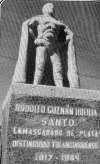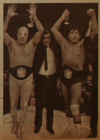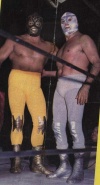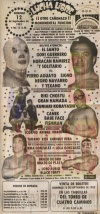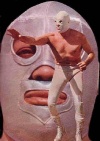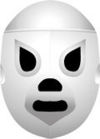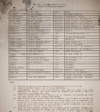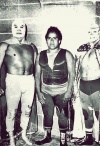El Santo: Difference between revisions
| Line 210: | Line 210: | ||
{{aline|[[1978]]/[[September 3|09/03]]|mask|[[El Santo]]|[[Bobby Lee]]|[[Palacio de los Deportes]] - [[Mexico City]]}} | {{aline|[[1978]]/[[September 3|09/03]]|mask|[[El Santo]]|[[Bobby Lee]]|[[Palacio de los Deportes]] - [[Mexico City]]}} | ||
{{aline|[[1978]]/[[September 24|09/24]]|hair|[[El Santo]]|[[Bobby Lee]]|[[Palacio de los Deportes]] - [[Mexico City]]}} | {{aline|[[1978]]/[[September 24|09/24]]|hair|[[El Santo]]|[[Bobby Lee]]|[[Palacio de los Deportes]] - [[Mexico City]]}} | ||
{{aline|[[1979]]/ | {{aline|[[1979]]/01/??|mask|[[El Santo]]|[[Urco]]|[[Guatemala]]}} | ||
{{aline|[[1980]]/[[March 30|03/30]]|hair|[[El Santo]]|[[Urco]]|[[Guatemala]]}} | {{aline|[[1980]]/[[March 30|03/30]]|hair|[[El Santo]]|[[Urco]]|[[Guatemala]]}} | ||
{{aline|[[1980]]/[[June 2|06/02]]|hair|[[El Santo]]|[[Judas]]|[[Gimnasio Olímpico]], [[Guatemala]]}} | {{aline|[[1980]]/[[June 2|06/02]]|hair|[[El Santo]]|[[Judas]]|[[Gimnasio Olímpico]], [[Guatemala]]}} | ||
Revision as of 23:29, 10 July 2020
Profile
| El Santo | |||||||||||||||||||||||||||||
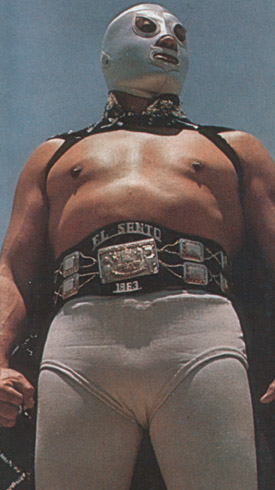 |
|
||||||||||||||||||||||||||||
| Wrestling Observer Hall Of Fame Member |
|---|
Biography
To say that El Santo is just a lucha legend would a huge understatement. He was more than a luchador with a parallel acting career. Santo is a cultural icon, a social phenomenon whose impact in the Mexican society is enormous in many different ways. Santo was a superhero like Superman, Batman or Spiderman - but with the difference that Santo was real and you could go to watch him wrestle every week, while the others were just comic characters. It's safe to say that Santo is the most popular wrestler ever in his home country, and he's more popular than Antonio Inoki, Riki Choshu, Lou Thesz, Hulk Hogan, Steve Austin and many others were and are. The only one that comes close to Santo is Japanese cultural hero Rikidozan, and he's actually Korean.
Rodolfo Guzmán Huerta was born September 23, 1917 in Tulancingo, Hidalgo. Son of Jesús Guzmán Campuzano and Josefina Huerta Márquez, he was the fifth of seven children. When he was still a little kid, his family moved to Mexico City and he kept studying at the Abraham Castellanos elementary school. During his youth, Rodolfo practised many sports, like baseball and (American) football.
Several of his brothers were wrestlers. (Miguel) "Black" Guzmán was the most popular one as he captured several National titles and a few NWA titles in both Mexico and Texas. Jesús wrestled as Pantera Negra but he died in the ring, while Javier wrestled as Jimmy Guzmán at some small arenas. When Rodolfo was working at a stockings factory he decided to become a luchador like his brothers so he learnt the martial art known as jujutsu (jiu-jitsu) and later he practised some Greco-Roman (amateur) wrestling.
After a few months of training with his brother Black, he made his professional debut teaming with him as Rudy Guzmán on June 28, 1934 in the Arena Peralvillo Cozumel of the Peralvillo district in Mexico City. He was 17 years old. But it was in Arena Pachuca, of Pachuca, Hidalgo, where EMLL superstar Jack O'Brien saw the talent that Rudy and Miguel had and recommended them to EMLL's main talent scout, the referee Jesús Lomelí.
Jesús took both brothers to Mexico City and got them signed to EMLL contracts. Miguel kept wrestling under his old name and became fairly popular, in fact in 1939 he was voted "rookie" of the year. On the other hand, Rodolfo wasn't so successful and rather than being "somebody else's brother" he decided to become his own self.
He started wrestling unmasked as El Hombre Rojo (Red Man) but this one wasn't a really memorable stint even though during that year he wrestled three times in the Arena Modelo (now known as Arena Mexico). In the meanwhile he had to work in many different places as carpenter, painter and other jobs to earn enough money to make a decent living.
In November of 1936, he left EMLL as he didn't feel he was getting a good push. Jesús Lomelí also left La Empresa and started promoting on his own at the Fronton México and when looking for young talent for his shows he didn't think it twice and called Rodolfo, who started wrestling under the mask of El Murciélago Enmascarado II (The Masked Bat II) as Jesús didn't want him to be Hombre Rojo anymore. The original Murciélago Velázquez didn't like the fact that a rookie was using his name without his permission so he complained to the Box y Lucha Commission and Rodolfo had to drop the gimmick.
Things weren't really working the right way. As soon as he started to get some heel heat (up to this point he had always been wrestling as a rudo) he had to drop the name and the hood. Also, his father had just recently died. Things were getting worse by the moment. Now if he wanted to keep wrestling he'd have to get a new name, so he had a meeting with his Lomelí, a man he had already developed a good friendship with. Lomelí suggested several names, like El Angel, but the most interesting one, considering he was a merciless rudo, was El Santo (The Saint in Spanish). Rodolfo loved the name and decided he'd become Santo.
El Santo's debut was on July 26, 1942 in the old Arena Mexico. Lomelí told him to buy a silver mask and tights so with help of maskmaker Antonio Martinez he got his first outfit. Rodolfo didn't have a lot of money so it was a cheap one, but at least it would be good enough to wrestle until he could afford getting a new one. But back to his first match under this new identity, it was an eight man Battle Royal with Bobby Bonales, Lobo Negro, Gorila Macías II, Bobby Rood, Murciélago Velázquez, Pavilivsky and Ciclón Veloz. The last two men in the ring were Santo and Ciclón so they fought in a regular 2 out of 3 falls match. Santo defeated Veloz in the first fall. Veloz took the second one, and during the third fall, Santo was giving Veloz such a beating that the referee Jesús Lomelí tried to stop it, but then Santo attacked him too and got himself DQ'd.
Around a week later Veloz and Santo fought each other in a rematch in which Santo upset Veloz, as everybody thought that the tecnico would get his revenge. The following week he wrestled another wild rudo, El Lobo Negro, who couldn't stop the silver hooded rudo either. But Santo's first big match was on August 16, 1942, when he faced Bobby Bonales in the main event of an Arena Mexico card. Bonales, already an stablished star, defeated Santo that night, however the young man was already making a big impact with his style.
On December 4, Santo defeated Lobo Negro in a "superlibre" (no rules) fight but one of the most memorable moments of the early Santo career was during his match against Dientes Hernández, as Santo gave his poor opponent EIGHT straight "fauls" (low blows). Dientes' wife sure wasn't happy about that one, but Santo's name was all over the lucha section of the papers now, and he soon became one of the most hated rudos of Mexico.
Santo got his first title ever on February 21, 1943 when he defeated his old enemy Ciclón Veloz to win the Mexican National Welterweight Championship. Santo kept that title for almost a year as he lost it on Feburary 18, 1944 against Jack O'Brien.
On March 19, Santo got his revenge of Murciélago Velázquez, as he defeated him to get the Mexican National Middleweight Title, thus become double National champion. Santo's first big mask defense also was against Velázquez, who got a free haircut courtesy of the silver masked one.
On April 2, 1943, Salvador Lutteroth opened a new building called Arena Coliseo, and for its first card ever, he booked a Santo vs. Tarzán López main event. López probably was the biggest star in Mexico back then, and as expected, he defeated Santo in that match. And as if that big loss wasn't enough, on June 11, Bobby Bonales defeated him for the Middleweight title. But he found the right way again and on September 24, at the EMLL Anniversary show at Arena Coliseo, Santo defeated Bonales in a mask vs. hair match.
During the first months of 1944, Santo didn't have a lot of luck as on May he had an auto accident that could have killed him. But soon after that accident he defeated Jack O'Brien in a mask vs. hair match and his career picked up again. A few months later, Santo broke up his relationship with his regular tag team partner, El Charro Aguayo, so he decided to look for a new tag team partner. He studied the talent available and he chose to team with a promising youngster that was just starting to get noticed.
So on November 19, "La Pareja Atómica" (The Atomic Pair) of El Santo and Salvador "Gory" Guerrero was born as that day they teamed for the first time ever to defeat Bobby Bonales and Jack O'Brien. La Pareja Atómica sure was a very explosive combo. Santo was a wild rudo brawler, but on the other hand Guerrero was a great technician.
Gory and Santo defeated everybody that crossed their path: O'Brien and Bonales, and O'Brien and López tried to stop them several times but they never could defeat them.
On May 15, 1946, Santo won his first World title. After the American Jack Reynolds vacated the NWA Welterweight Title, EMLL asked Col. Landry (from the NWA) to let them run a tournament for that title. They were given the nod, though the first two wrestlers in the official NWA welterweight rankings, the Bulgarian Pete Pancoff and the American Red Garner, had to participate in that tournament as well. Santo reached the finals by defeating Murciélago Velázquez and Jack O'Brien. On the other side of the brackets, Pancoff defeated Dientes Hernandez and Emilio Charles Sr. to get to the final match. Santo defeated Pancoff after the Bulgarian submitted to a Boston crab in the legendary final match. When Pancoff submitted, the crowd exploded in a huge "SANTO! SANTO! SANTO!" chorus.
This was one of the turning points of the career of Santo because even though he was a natural heel, and wrestled and acted like a rudo, by defeating a foreign wrestler to get a world title he was defending the country's pride and that made him a national hero.
But after that big win, things didn't work as expected. On September 20, Wolf Rubinskis, who was making his Arena Mexico debut, crushed him the same way he crushed Ciclón Veloz when he made his debut. But the worst thing is that during this match Santo got injured and had to take a few weeks off.
His career wasn't going as expected after his return in 1947 either. On February 14, Jack O'Brien defeated him for the NWA Welterweight title. Again, Santo was the chosen one to give the welcome to a new wrestler that was making debut: Black Shadow, and yes, Santo lost to Shadow clean in the middle of the ring too.
Santo's next big profile match was on 1949, when he had to face his friend and partner Gory Guerrero. It was March when Lutteroth announced that there would be a tournament to decide the number one contender for the NWA Welterweight title that O'Brien still held. The storyline says that Santo encouraged Gory, a natural Middleweight, to lose weight and participate in the tournament. Both men reached the finals of the tournament, and the day of the friend vs. friend match, EMLL sold-out the building (Arena Coliseo). Gory won this memorable fight by making his partner Santo submit. Many thought that jealousy would break their friendship but this match did nothing but make it stronger. In fact Santo was the second of his compadre when on April 29, Gory defeated O'Brien in the title match.
During 1949, Santo also wrestled a few matches in Houston, Texas... but without his mask on! He eventually returned to Mexico but a few things changed.
While Santo was gone, the young undercard team of Blue Demon and Black Shadow, "Los Hermanos Shadow", was getting more popular by the day so the promoters obviously decided to face them to the reformed team of Gory and Santo. On April 9, 1950, the atomic pair made quick work out of the masked "brothers" in a tag match.
Shadow claimed he'd avenge that loss and he started feuding extensively with Santo. The Shadow/Santo rivalry reached its higher point on November 7, 1952 when both men faced each other in the mask vs. mask match that is considered the most important one in the history of lucha libre in Mexico. Arena Coliseo was the place in which Black Shadow was revealed to be Alejandro Cruz Ortíz, from León de los Aldama.
Again somebody was anxious to get revenge on Santo, but this time it Blue Demon who wanted to avenge the mask loss of his wrestling brother, Black Shadow. After Demon humilliated Santo, winning him in two straight falls during a non-title match held on August 7, 1953, Demon challenged Santo to a match with the NWA Welterweight title at stake. On September 27, in what many consider the biggest loss in his career, Santo lost the title to Blue Demon.
But it was around this time when Santo was starting to become the myth he is now. Thanks to the TV coverage, lucha libre had its first ever "boom", and Santo's character was successfully marketed in comics and other merchandising. Also, at this time there was a huge nationalism among the Mexican population, and Santo always defented the colors of his country, like on the first day of the new year 1954, when he defeated Chinese wrestler Sugi Sito to capture the NWA World Middleweight Championship.
It was in 1962 that Santo made the decision to become a técnico. After all, he was way too loved to be hated. During a match in which he teamed with Los Espantos (I & II) against Rayo de Jalisco, Henry Pilusso and Rito Romero, his partners turned on him and left him alone in the ring against the three tecnicos that obviously defeated him. On his first match as a good guy, held on July 5, he teamed with Pilusso against the Espantos. That night Santo gave such an exhibition of high flying and ring knowledge that he was given an unanimous standing ovation by the crowd.
Another important fact in Santo's career is that on April 19, 1963, he teamed with Blue Demon for the first time ever. From then on, the dream team wrestled together many other times all over Mexico, though they never were a regular tag team.
Around this time Santo also was a film star, as in 1958 he filmed his first movie. After that cinematic debut, he starred in other 50+ movies. Even though those films didn't exactly have great production values (even by the 60s standards) and the plots of them weren't mindbogglingly great either, the people flocked over to the cinema to watch them all. Those movies were quite a hit in other countries as well, as they were really popular all over Latin America, Spain and even Lebanon, where there's a cinema with a huge Santo statue in the entrance. Many cinema critics loved to hate Santo, but a proved fact is that the three most successful stars of the Mexican cinema history are Pedro Infante, Mario Moreno "Cantinflas" and El Santo. There's an anecdote that says that once, representants of a Chinese company came to Mexico looking for Mexican films. They were shown a few productions that were considered among the best in the history of Mexican cinema, but the Chinese said that they didn't want those films. They wanted Santo, because they claimed that "Santo represented the perfect hero fighting against the evil".
Journey towards Retirement
Santo was also getting older, so now he mainly wrestled in six-men tag matches rather than singles or tag team bouts. He formed a successful team with a young good worker called Rayo de Jalisco and they captured the Mexican National Tag Team Titles twice over the decade (of the 60s). In 1975, his "tercia" with El Solitario and Mil Mascaras was such a huge hit that it was voted team of the year even though they didn't team together extensively. Unlike other EMLL wrestlers, Santo had special privileges, for instance he was allowed to appear in cards of the rival promotion UWA, but in 1977 there was a big EMLL break down and many wrestlers, including Santo, left "La Empresa".
In 1980, during a match vs. Los Misioneros (El Signo, Negro Navarro and Texano), Santo fell unconscious, and he was later diagnosed with a coronary problem. A year later, in 1981, Santo suffered a heart attack when teaming with Huracán Ramirez and Black Shadow against Los Misioneros de la Muerte (Signo, Texano & Negro Navarro). Santo's wrestling license was revoked so he decided it was time to say goodbye. After this incident, Santo secretly had an operation.
Santo's last feud was against a young masked superstar called Bobby Lee. Lee said that Santo wouldn't leave the business masked and challenged him to a mask vs. mask match. The challenge was accepted and Santo took Lee's mask revealing him to be Carlos Alvarado. Lee had his feet on the ropes when Santo made him submit to the camel clutch, but the referee didn't see it. Santo failed to defeat Lee in a match for the UWA Welterweight Championship Bobby held, but later he took his hair in a hair vs. mask match.
In 1982, Santo had a three match retirement tour. In the first match he teamed with Solitario against Villano III and Rokambole (Villano V) at the Palacio de los Deportes. In the second match, held in Arena Mexico, he teamed with Gran Hamada to defeat Villano I and Scorpio in the first round of a losers advance tournament (where all the teams were comprised of a masked man and an unmasked wrestler) in which the final losers would get his hair shaved or his mask removed. And in the final match of his career, held on September 12 at the Toreo de Cuatro Caminos, he teamed with his old friend Gory Guerrero (who was already retired but returned for this one-time deal), Huracán Ramírez and El Solitario to defeat Los Misioneros, and his last major opponent, Perro Aguayo, in two straight falls, both won via DQ.
Now that he was retired, Santo kept active doing other things. A month later one of his sons debuted under the Hijo del Santo mask, and Santo was at ringside during all the matches of his son's debut tour.
On January 26, 1984 he appeared in the lucha special of the talk program "Contrapunto" (Counterpoint), and partially removed his mask in a totally unexpected way. Some say that he did this because he felt that he had little time to live.
A Mortal Saint with an Immortal Legacy
On February 5, two weeks after he took his mask off on a national TV program, Rodolfo Guzmán Huerta felt a tremendous pain in the chest after his debut as an escapist at the Teatro (teather) Blanquita. He was taken to the Mosel Hospital but nothing could be done. Santo was dead. The following day this was the biggest piece of news all over the country. Each and every magazine and newspaper extensively covered the news in the first pages, and all the TV and radio stations had special Santo programs.
During his life, Rodolfo had the opportunity to be two different individuals, but he chose to be Santo in death. The following day he was buried with his mask on in what is considered to be the biggest burial in the history of Mexico. Proof that the whole country mourned Santo's death was that an estimated crowd of 10,000 showed up and literally blocked the streets to the point that it took several hours until the coffin made it to the mausoleum. Several wrestlers like Mil Mascaras and Blue Demon, Ray Mendoza, Charles Bronson Mexicano, Enrique Llanes and a teary Wolf Ruvinskis showed up to give Santo his last goodbye. Hijo del Santo and Huracán Ramírez among others, carried the coffin to the Mausoleo (mausoleum) María del Ángel where Santo rests in peace.
To this day, Santo is still an important piece of the history of the country and also a relevant part of the Mexican folklore. Even now, more than fifteen years after his death, everybody in Mexico knows about El Santo. His films are still shown on TV from time to time and they still generate ratings after all these years. Many magazines (not just lucha or movie magazines) still publish Santo articles or even special issues. In November of 1999, Somos ("We are") published a Santo special that included several pictures of Rodolfo Guzmán without his mask. El Hijo Del Santo threatened to sue Televisa (owners of the magazine) but since the source of the pictures was one of his brothers the lawsuit was dropped.
One could say that as long as there is lucha libre in Mexico, there will be Santo, but even if there wasn't lucha, Santo would still be alive in the heart of the Mexican citizens.
Filmography
- Santo Contra el Cerebro del Mal (1958) (coproduced in Cuba)
- Santo Contra Los Hombres Infernales (1958) (coproduced in Cuba)
- Santo Contra Los Zombis (1961)
- Santo Contra el Rey del Crimen (1961)
- Santo en el Hotel de la Muerte (1961)
- Santo Contra el Cerebro Diabólico (1962)
- Santo vs las Mujeres Vampiro (1962)
- Santo en el Museo de Cera (1963)
- Santo vs el Estrangulador (1963)
- Santo Contra el Espectro (1963)
- Blue Demon Contra el Poder Satánico (1964)
- El Hacha Diabólica (1964)
- Atacan las Brujas (1964)
- Profanadores de Tumbas (1965)
- El Barón Brákola (1965) (three episodes)
- Santo, el Enmascarado de Plata vs la Invasión de Los Marcianos (1966)
- Santo, el Enmascarado de Plata vs Los Villanos del Ring (1966)
- Operación 67 (1966)
- El Tesoro de Moctezuma (1966)
- Santo en el Tesoro de Drácula (1968
- Santo Contra Capulina (1968)
- Santo Contra Blue Demon en la Atlántida (1969)
- Santo y Blue Demon Contra Los Monstruos (1969)
- El Mundo de los Muertos (1969)
- Santo vs Los Cazadores de Cabezas (1969)
- Santo Frente A la Muerte (1969) (coproduced in Colombia and Spain)
- Santo en la Venganza de las Mujeres Vampiro (1970)
- Santo Contra Los Jinetes del Terror (1970)
- Santo vs la Mafia del Vicio (1970)
- Santo en la Venganza de la Momia (1970)
- Las Momias de Guanajuato (1970)
- Santo Contra Los Asesinos de Otros Mundos (1971)
- Santo vs la Hija de Frankenstein (1971)
- Misión Suicida (1971)
- Santo y el Aguila Real (el águila real) (1971)
- Santo Contra la Magia Negra (1972) (coproduced in Haití)
- Santo y Blue Demon Contra Drácula y el Hombre Lobo (1972)
- Las Bestias del Terror (1972)
- Anónimo Mortal (1972)
- Santo Contra Los Secuestradores (1972) (coproduced with Ecuador)
- Santo vs las Lobas (1972)
- Santo y Blue Demon Contra el Doctor Frankestein (1973)
- Santo Contra el Doctor Muerte (1973) (coproduced in Spain)
- Santo en el Misterio de la Perla Negra (1974) (coproduced in Colombia & Spain)
- La Venganza de la Llorona (1974)
- Santo en Oro Negro (1975) (coproduced in part in Puerto Rico)
- México de Mis Amores (1976) (documentary)
- Misterio en las Bermudas (1977)
- Santo en la Frontera del Terror (1979)
- Chanoc y el Hijo del Santo vs Los Vampiros Asesinos (1981) (special)
- Santo Contra el Asesino de la Televisión (1981)
- El Puño de la Muerte (1982)
- La Furia de Los Karatecas (1982)
Luchas de apuestas record
- ↑ Box y Lucha 3339
- ↑ Box y Lucha 3339
- ↑ Tercer Hombre would lose his mask multiple times - SuperLuchas
- ↑ part of a list in Lucha Libre 82, implied to be prior to Espanto I match
- ↑ part of a list in Lucha Libre 82, implied to be prior to Espanto I match
- ↑ part of a list in Lucha Libre 82, implied to be prior to Espanto I match
- ↑ part of a list in Lucha Libre 82, implied to be after the Espanto I match
- ↑ Lucha Libre 78
- ↑ Lucha Libre 109
- ↑ Lucha Libre 167
- ↑ http://superluchas.net/2014/12/17/en-un-dia-como-hoy-el-santo-rapo-chino-chow/
Gallery
 with Blue Demon |
